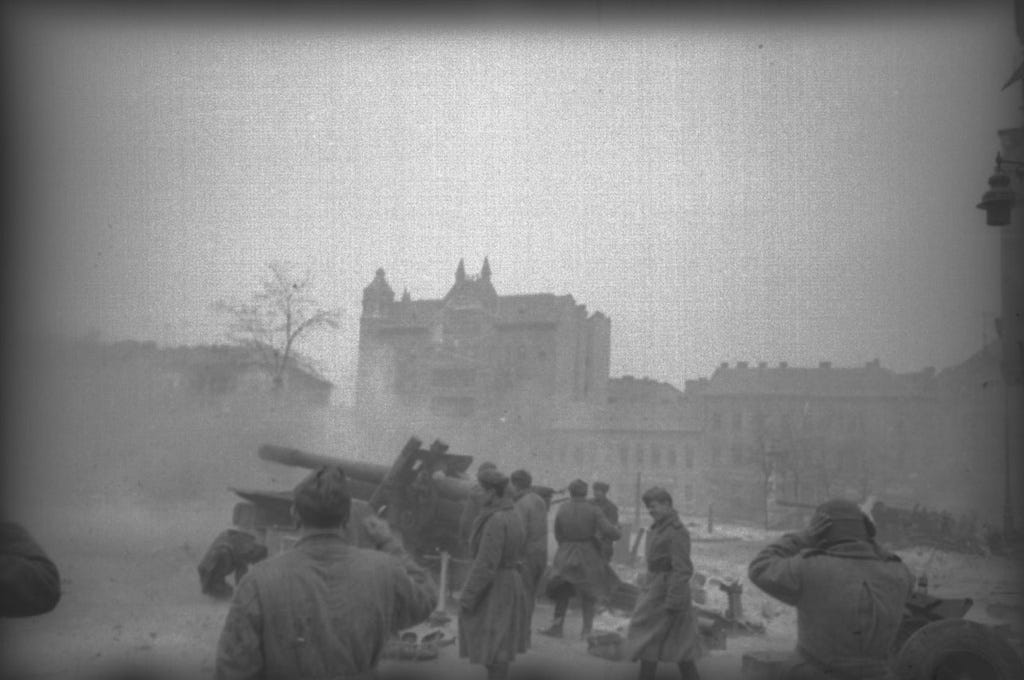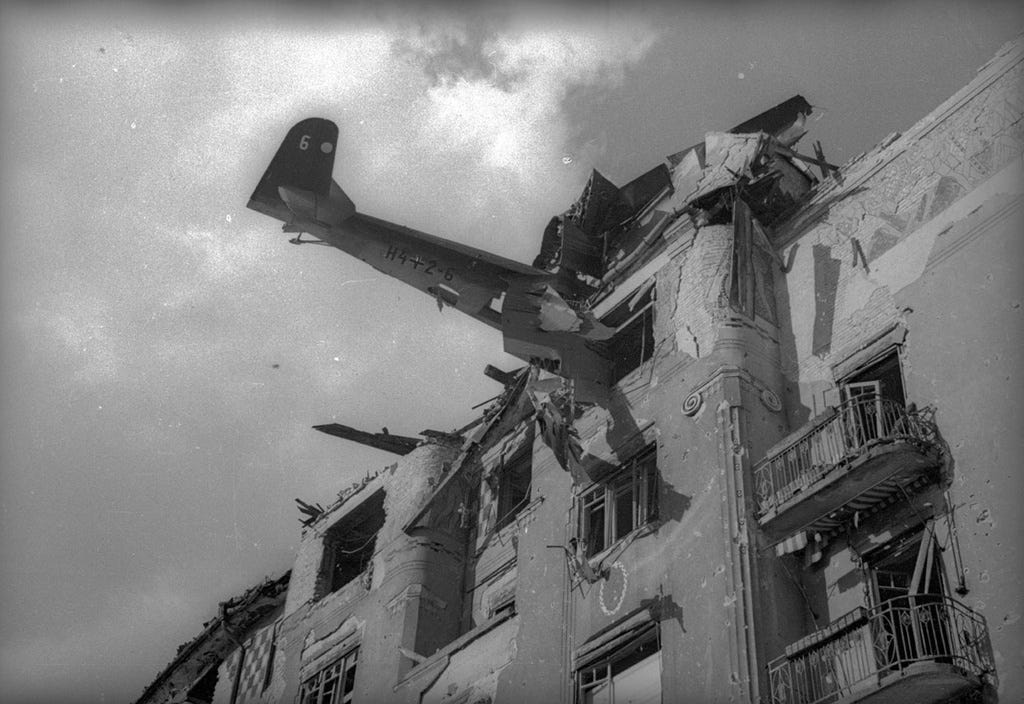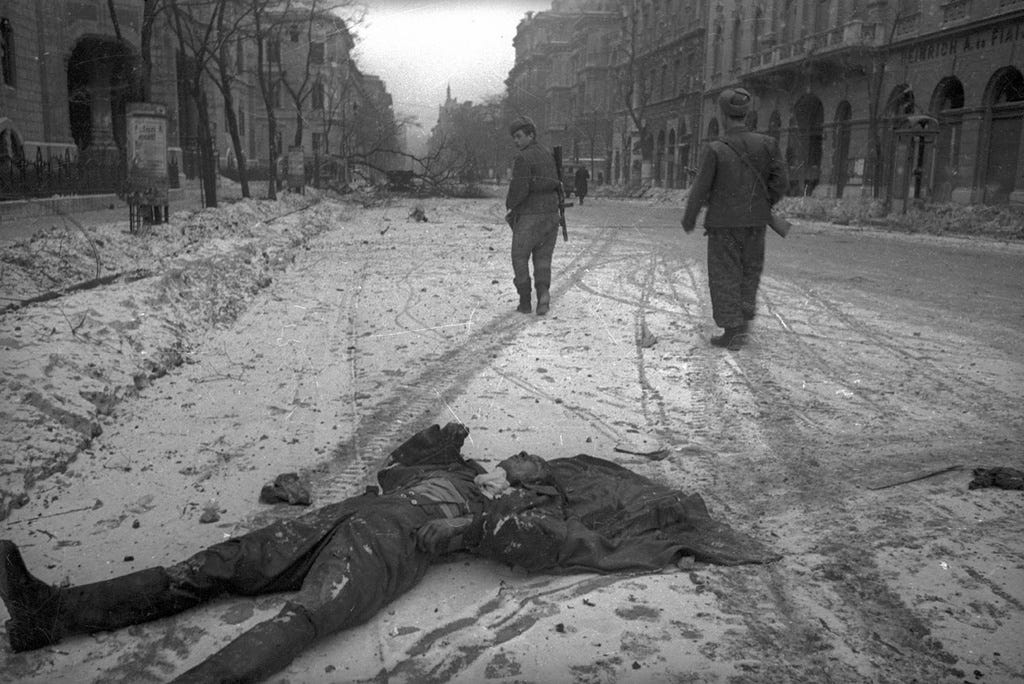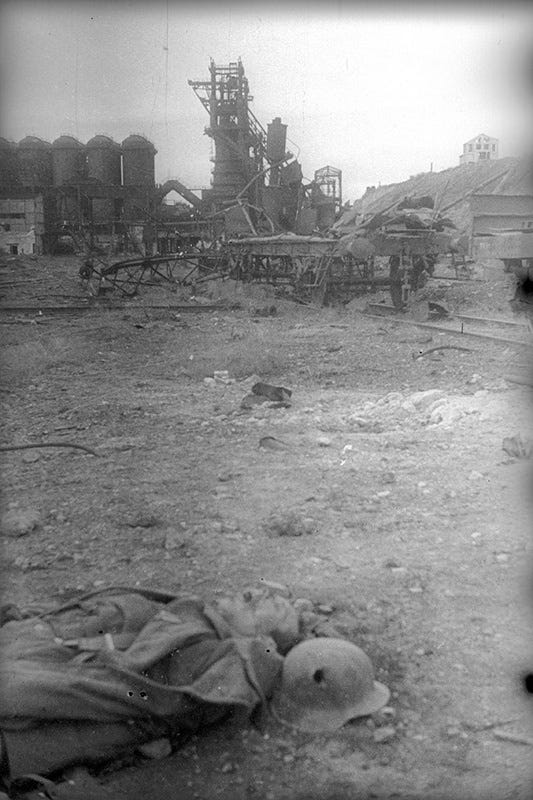Photographer Evgeny Khaldei — “Liberation” of Budapest
Халдей Евгений Ананьевич - Winter, February 1945
Evgeny Khaldei, was really Efim, probably Chaim. He was born in Yuzovka, later Stalino, later Donetsk. When Khaldei was 1 year old, there was a pogrom in Yuzovka.
NYT: “he was in his mother's arms when she was killed in a pogrom in 1918. The bullet passed through her body and gravely wounded Yevgeny, who survived and later learned to live on grass during Soviet Ukrainian famines. His father and (3 of 4?) sisters were killed in a Nazi [pogrom] during WWII. [in 1942?]”

There is a vast legacy of Khaldei’s work. I will publish some of his photos. I will start with Budapest in the February 1945.

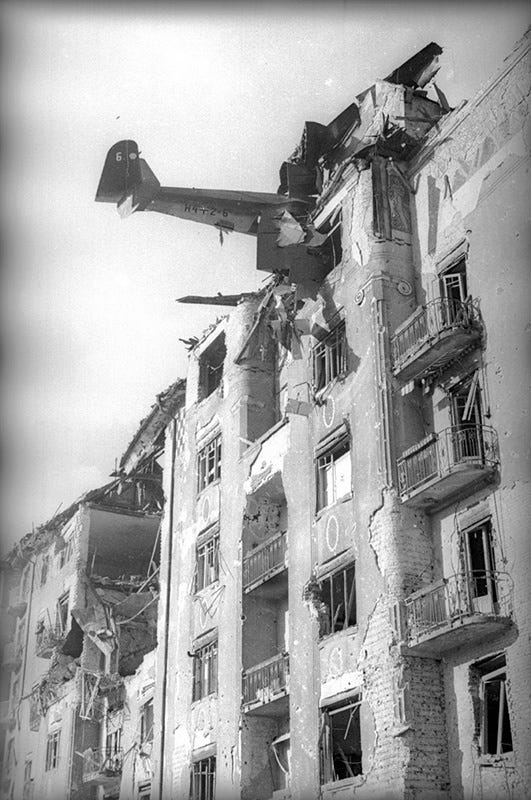
This is Franz Joseph bridge. Now Josef Stalin, of course. It requires great effort, logistics to mount these icons. In the middle of the war. How and when did Chabad picked up this retched symbolism? Ramash did not personally witness the horrors of Stalinism, neither did the Rayatz. How did he come up with all the propaganda attributes of the 20th century dictatorship? Bere Gourary said Ramash picked it up in Germany. But even Germany never had this required ubiquitous iconography. This shameful part of New Chabad culture is hard for me to understand or forgive.
It goes beyond the protestant revulsion of the Catholic iconography. The reference was the most evil person of the past century. To pick up that culture is, as they say, beyond the pale.
It will take Hungarians only a decade to fully realize what befallen them, and in 1957 they will see the Russian tanks again.
Germans or Russians did not care for the beautiful Budapest.
Pogrom in Budapest
“This photograph didn’t go anywhere for 50 years, not to a single exhibition [or publication]” - Khaldei recalled, “I tried. And now the 50th anniversary of the Victory it finally was published in the USA, but we [Russia] still silence”. Khaldei told in a film made in 1996 by Belgian documentarian Marc Henri Weinberg, a big fan of his work. Thew film called “Stalin’s Photographer”. There, among other things, he tells the story of the photograph with the Jewish couple. “We entered Budapest. It was scary, I saw a synagogue with Jewish corpses, no one buried them. And then I noticed that a husband and wife with yellow stars. And so it struck me: the city was liberated, and they still wore these stars. I was in a navy uniform, black leather coat, they got scared and decided that I was an SS man.” Khaldei addressed them in Yiddish (they responded in “German-Jewish”): “Wait!” He came up and tore the star from the man, then from the woman. They were afraid again, and the Khaldei said to them: “Alles ist gut.” I guessed that I needed to say some kind of Jewish password, and I said: “Sholom Aleichem.” They burst into tears and fell on the photographer’s chest.

This some sort of storefront. I don’t think ghetto existed in Budapest? Most likely, Germans or Hungarians shot everyone who huddled in the room. Khaldei referred to it as a “synagogue”, a shule.
Don’t know what was done to these women. You can see a man sitting on a step crying. Budapest city pedestrian traffic as usual.
Khaldei’s mother was killed in a pogrom. What did he feel? Or was he numb from all the horrors of Stalin and Hitler?
Evidently, in 1945 there were still Jews in Budapest.



